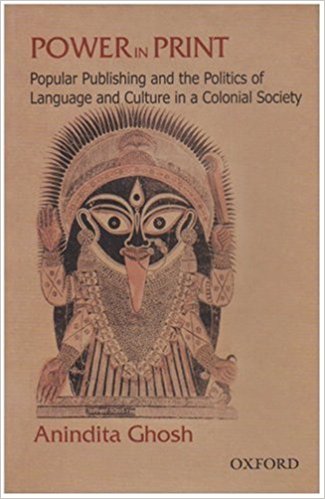Agrowing number of studies in recent Indian historiography have paid close attention to the role played by print in shaping the contours of modern India. Earlier, the imprecise and unsatisfactory term ‘print culture’ was often invoked to stand in for a perspective in which print was employed as some kind of a wide-angle lens, whose panoptic sweep and scope often obscured—or even misrepresented—the smaller picture. However, the more focussed and calibrated perspective offered by the discipline of book history in recent years has acted as a kind of corrective to the grand narratives of print which still continue to enjoy some degree of scholarly sanction. By paying close attention to a wide, and often neglected, range of primary sources, it has been possible for scholars to retrieve histories that were thought to have passed beyond the reach of any archaeological tool. In the monograph under review, Anindita Ghosh attempts to plot the uneven history of print in Bengal along the twin axes of language and literature. While acknowledging the importance of the colonizer-colonized framework, she also draws our attention to ‘how in a competitive colonial environment, print-languages and literature afford opportunities to indigenous groups for consolidating power, along multiple axes of class, gender and community’.

Print Culture
Abhijit Gupta
POWER IN PRINT: POPULAR PUBLISHING AND THE POLITICS OF LANGUAGE AND CULTURE IN A COLONIAL SOCIETY by Anindita Ghosh Oxford University Press, New Delhi, 2006, 348 pp., 650
May 2006, volume 30, No 5
